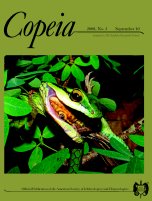Painted Turtles (Chrysemys picta) are often used to test life-history theory. However, within populations, the factors that contribute to among-individual variation in egg size and clutch size are poorly understood, and an understanding of the biotic and abiotic parameters that contribute to this variation is important when framing patterns of maternal investment in a life-history context. We examined proximate sources of reproductive variation in a northern population of Painted Turtles, we attempted to frame these sources of variation in a life-history context, and we evaluate which optimality model most adequately explains patterns of reproductive allocation in populations of small-bodied turtles. We used multiple linear regression on data from 168 first clutches of marked females that nested at a long-term study site in Algonquin Park, Ontario, Canada, in 2004. We found that mean egg mass was positively related to maximum plastron length (MPL) and female age, and negatively related to clutch size and water temperature prior to oviposition. Clutch size was positively related to MPL and carapace height, and negatively related to mean egg mass, and the number of clutches laid in the season. Body size (MPL) was the most important predictor of each reproductive parameter, and residual analysis indicated that egg mass was more conserved than clutch size across the range of female body sizes sampled in this study. Thus, egg size may be optimized as a body size-specific function, and in light of this, we suggest that ‘phenotype-habitat matching’ may occur in C. picta. If a female's phenotype (e.g., body size) influences the selective environment of her eggs and hatchlings (e.g., if larger females generally nest farther away from water), then the optimal strategy of maternal investment should vary among maternal phenotypes. The positive correlation between egg mass and body size that was observed in the present study can be explained in adaptive terms under hypotheses based on the concept of phenotype–habitat matching.
How to translate text using browser tools
10 September 2008
Sources and Significance of Among-Individual Reproductive Variation in a Northern Population of Painted Turtles (Chrysemys picta)
Njal Rollinson,
Ronald J. Brooks
ACCESS THE FULL ARTICLE

Copeia
Vol. 2008 • No. 3
September 2008
Vol. 2008 • No. 3
September 2008




